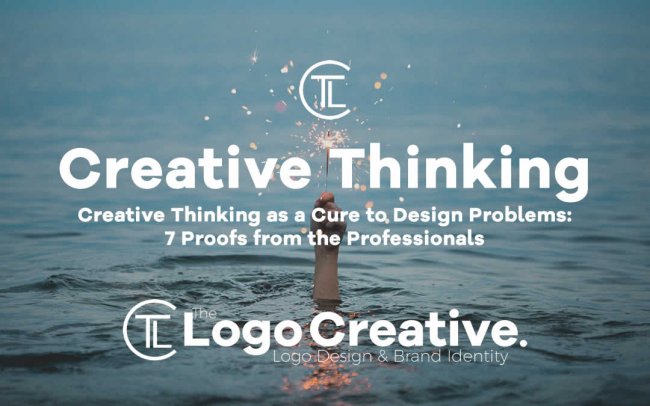The most alarming problem a designer could face is obviously a lack of design. The deadline is closing in, you give your best to finish your project, but everything you try to do in order to conjure a satisfying design solution falls apart. Creative blocks are not just an excuse that some people use in order to justify their unwillingness to focus on their work, they happen to all of us more often than we care to admit.
Another widely spread issue is the constant lack of time, even when we’re not buried with work. It appears that time management represents a challenge that most people have difficulties to overcome. In addition, keeping the balance between cost-effectiveness and user experience also stands as a massive obstacle on our way to the client’s satisfaction.
There are simply too many variables that we need to take into account and it appears that the universal answer sits in our ability to think through the problem.
In order to prove our theory, we’ve prepared this article that contains seven arguments that show how creative thinking can mend any design problem we could face.
Table of Contents
What do we mean when we say creative thinking?
Most of the time we think of creativity as the ability to come up with a mind-blowing painting or music that sounds like nothing anyone has ever heard before. However, creative thinking represents a process which allows us to come up with a solution for any given problem by applying an analytical approach. The creative thinking process depends on various personality traits and skills we can all master in time. The ultimate goal of creative thinking is to become able to observe an issue from a different perspective, thus keeping an open mind to new ideas and problem-solving techniques.
At times, we can complicate things by overthinking and overreaching in our search for a solution, while the right answer screams at us from another corner. Creative thinking simplifies our search and provides a unique perspective, which is essential for any type of project.
Brainstorming the solution
Disregarding the aspect of the design process that keeps you awake and worried, one of the ways to come up with a proper answer is to ask the right questions. Sherzod Max, a successful product designer, argues that brainstorming is a powerful creative thinking technique that allows you to ask a series of questions regarding the design issue you’re currently facing and think of a most complete answer to each of those questions. It doesn’t matter if you’re designing a website, campaign banner, business card, or a kitchen utility product, it’s all the same. Ask yourself questions like:
- What’s the purpose of this product?
- Who uses it?
- Where can it be used?
- What do I want to accomplish with the design
Just go along and even create a list of questions which you can pull out any time you get stuck with a project.
Timesaving by outsourcing
When the deadlines start to draw dangerously near, there’s not much that we can do to make the time run slower or make up for the time we already lost. Instead of rushing in to finish the project as soon as possible, which could lead to a series of problems and mistakes that would take even more time to fix, most professionals recommend outsourcing the portion of the work that’s not too challenging. With someone else working on simple, time-consuming aspects of your project you can focus on more demanding aspects of the design and thus save precious time.
This approach is very popular with students who often seek out affordable services for essay, homework, and dissertation editing purposes, according to a domywriting review that was published recently.
Framing and reframing
This is a great way to deal with virtually any type of design problem that we can run into. It includes looking at a situation from one perspective, usually, the one that we’re most comfortable with, and then changing the frame by looking at the whole situation closer, deeper, wider, simply put – from different perspectives. Professor Tina Seeling, from Stanford University, says that although not everyone is born with this ability, it’s easy to master with time.
Use your doubt
There’s no better friend for innovation than a healthy dose of doubt, some experts would argue. Think about it as a testing phase in which you ask yourself if there’s a better, simpler, more effective solution than the one you just came up with. This is a great way to think as a completely different person, your own competitor if you will. This technique allows you to challenge your own creativity and come up with an enhanced version of a design. More importantly, it allows you to push your own limits and broaden your horizon with each new design upgrade.
Experiment
Experience helps us find our way in certain situations that we have already been through. When it comes to design, we use our experience to solve issues in a way we know would work. However, there comes a time when all of our experience doesn’t mean a thing or doesn’t provide a solution that would satisfy the needs of our client.
According to research, experimentation is a foundation of progress for many business giants like Amazon and Uber. This is an old technique which is often attributed to the work of Tomas Edison, who used to run constant experiments in terms of coming up with all kinds of solutions until the right one turns up. This approach might take some time, but eventually, the results can’t be disputed.
Visualization
Many decades ago, Albert Einstein argued that visualization can help us simplify some complex issues by creating an image in our mind that would allow us to understand the nature of the problem we need to solve. Sometimes, our mind is more capable to articulate an idea in our head than on a piece of paper or computer. The ability to visualize your problem allows you to observe it from multiple perspectives, which can ultimately provide you with more than one solution to your problem.
Ask for feedback and think on it
Digital strategist, David Gonyo, claims that sometimes in order to find a solution to a problem we need to understand how other people see our design. His idea is rather simple, it includes creating a few simplified versions of the design and letting people outside the process test the product for a while. Once the trial period completes, the feedback would allow us to understand the issues and fix them.
Conclusion
Creativity is the essence of design, there’s no doubt about it. However, creative thinking as a skill can help us come up with ideas that can render every design problem seamless to overcome. We hope this article has opened the door to a career full of exciting problems you are going to unlock using your creative thinking capacities.

Author Bio
Michael Gorman is a freelance content writer with vast experience in design, business, and human relations. His career includes working as a writer and editor for multiple college paper writing services.


